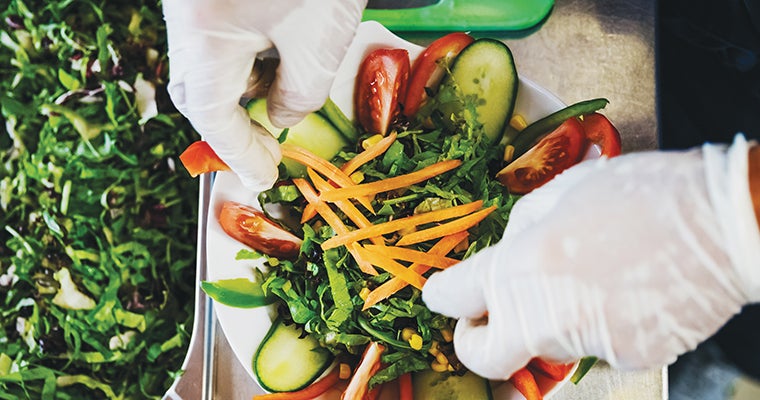Here are important areas to watch when considering food and nutrition services safety.
Healthcare and senior living foodservice operators have a responsibility to control or mitigate risks related to pathogens. COVID-19 has shown how important it is to outline a safety plan, a process necessary to brace for a surge or a second wave of the pandemic.
Now is the time to improve on experiences from the early months of COVID-19. This includes key overlapping areas: infection control and safety protocols, as well as menu planning and operational best practices.
Begin with infection prevention experts
Collaborate with your infection prevention team on ways to provide a safe dining experience for staff, patients and residents. Following infection control protocols protects them and your vital foodservice team. Examples include:
- Have a staff personal protection equipment policy
- Develop a meal ordering and delivery policy for isolation and non-isolation rooms
Take a close look at the menu
Consider both what food you’re able to serve as well as how you’re able to serve it. Everything from preparation to product availability to staffing availability are in play. Planning ahead allows maximum flexibility for menus and staffing. Here are areas to address:
Limited staff and potential disruption in food supply
- Streamline your menu
- Have a convenience menu
Social distancing measures
- Plan a to-go menu and an in-room menu and delivery process
- Develop a low-/no-contact process
- Make catering and retail modifications (What venues will remain open when visitors are restricted and social distancing required?)
- Think about the overall impact on staffing and equipment needs
Dig into other operational details
We invite Gordon Food Service customers to reference this comprehensive checklist. It has planning suggestions in these areas:
- Infection Control Protocols
- Staffing and Employee Safety
- Menu
- Operations










